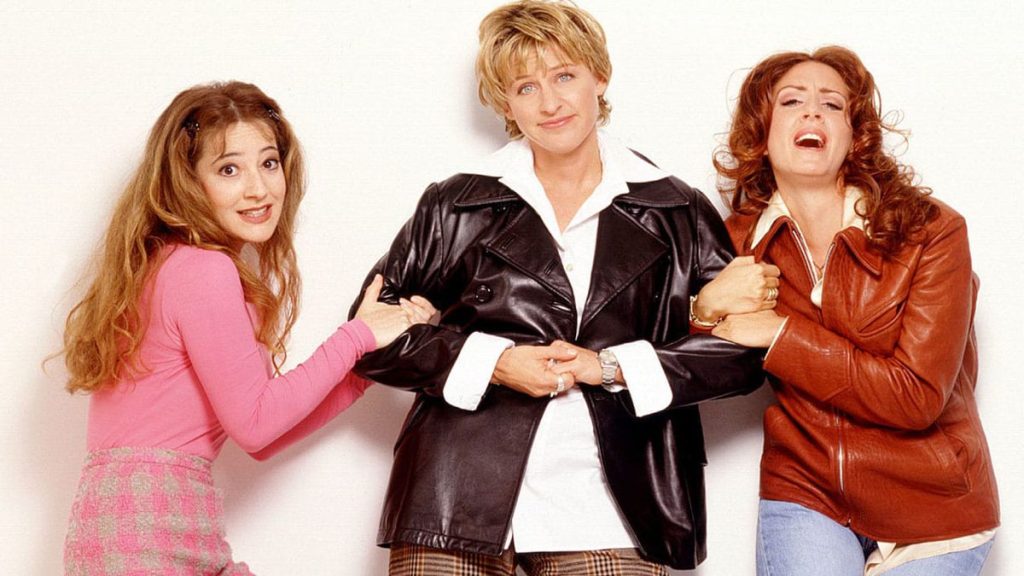What is a Chapstick Lesbian?
A chapstick lesbian is a term used to describe lesbians who fall somewhere between the spectrum of a femme and a butch. They don’t identify with the high femininity often associated with lipstick lesbians, nor do they resonate with the more traditionally masculine traits of a butch lesbian. Instead, chapstick lesbians embrace a comfortable, low-maintenance style that is typically androgynous or casually feminine. Think of someone who favors jeans, T-shirts, and, of course, chapstick over lipstick.
The Origin of the Term
The term “chapstick lesbian” emerged as a way for individuals to identify their unique position in the lesbian community. It highlights a balance between femininity and masculinity, rejecting the extremes of either end. This identity is about finding comfort and authenticity in one’s presentation, without the pressure to conform to societal expectations of how a lesbian “should” look or behave.
The Cultural Significance
The existence and recognition of identities like chapstick lesbians are crucial in fostering inclusivity and understanding within the LGBTQ+ community. These labels allow individuals to find their tribe and feel seen. For many, identifying as a chapstick lesbian is a way to assert their autonomy over their appearance and reject the notion that femininity or masculinity must be performed in a specific way to be valid.
Stereotypes and Misconceptions
Like any label, the term chapstick lesbian can be subject to stereotypes and misconceptions. Some might assume that chapstick lesbians are “not lesbian enough” or that they are indecisive about their identity. These assumptions are not only incorrect but also harmful. A chapstick lesbian’s identity is just as valid and significant as any other. It’s important to remember that identity is personal and fluid, and each individual’s expression of their sexuality is unique.
Representation in Media
Representation of chapstick lesbians in media has been growing, but there is still a long way to go. Characters that embody this identity help break down stereotypes and provide visibility for those who identify similarly. Shows like “The L Word” and characters like Elena Alvarez from “One Day at a Time” offer glimpses into the lives of chapstick lesbians, showcasing their stories and experiences.
Embracing the Label
For those who identify as chapstick lesbians, embracing the label can be empowering. It’s a way to declare, “This is who I am,” and find solidarity with others who share similar experiences. Whether it’s through fashion choices, interests, or mannerisms, chapstick lesbians carve out a space for themselves within the broader LGBTQ+ community.
Conclusion
The term “chapstick lesbian” is more than just a label; it’s a celebration of authenticity and individuality. It challenges the rigid definitions of femininity and masculinity, allowing those who identify with it to navigate their identity with confidence and comfort. As society continues to evolve, the recognition and respect for diverse identities like chapstick lesbians play a crucial role in promoting inclusivity and understanding.
FAQs
Q: Is the term “chapstick lesbian” universally understood and accepted? A: While the term is recognized within many LGBTQ+ circles, its understanding and acceptance can vary depending on cultural and regional contexts. It’s always important to ask individuals how they identify and respect their chosen labels.
Q: Can a chapstick lesbian also identify with other labels? A: Absolutely. Identity is fluid, and many people may find that they resonate with multiple labels. It’s all about what feels right for the individual.
Q: How can media better represent chapstick lesbians? A: Media can improve representation by including more diverse characters and stories that reflect the real-life experiences of chapstick lesbians, avoiding stereotypes, and providing depth to these characters.
Q: Are there any famous chapstick lesbians? A: While not all celebrities publicly label themselves, some who might fit the chapstick lesbian identity include Ellen Page (now Elliot Page) before transitioning and Tegan and Sara Quin, known for their casual, androgynous style.
Q: How can someone support a friend who identifies as a chapstick lesbian? A: Support them by respecting their identity, using their preferred labels, and being an ally. Educate yourself on LGBTQ+ issues and stand up against stereotypes and discrimination.

